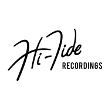racingsnail84

Joined: Aug 29, 2021
Posts: 84
|

Posted on May 04 2023 04:42 PM
As I learn more about creating “the” Surf sound the more I realize there is more to it than just spring reverb and that a lot of the early stuff wasn’t as clean as I initially thought it was.
I am learning that it is common to have some slight distortion/light overdrive before (or after?)the reverb… is this correct?
I’m assuming the 1st wave bands had this occur naturally from cranking their amps super loud they would naturally break up and become overdriven…?
In lieu of naturally overdriven amps , what OD pedals do you guys like?
Tube Screamer, Blues Driver, Blossom Point?
Thanks!
|
rfcii

Joined: Oct 28, 2018
Posts: 186
Quimper Peninsula, WA



|

Posted on May 04 2023 04:57 PM
Personally, I don't really use pure overdrive. I do have an Acid Fuzz Sonic Boom pedal which has a boost and fuzz, and I do use those, though not for surf so much.
For surf I use a varied approach - the Quilter amp I have has a boost (weirdly only accessable through the footswitch, but I leave it on almost always) and I also play around with a Blossom Point and a Nocturne Atomic Brain. Various combinations of these will radically alter the amp's sound. Not exactly distortion, but they definitely pep it all up, and make the reverb (surfybear) hit and drip way harder.
|
synchro
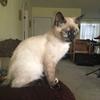
Joined: Feb 02, 2008
Posts: 4567
Not One-Sawn, but Two-Sawn . . . AZ.





|

Posted on May 04 2023 06:07 PM
racingsnail84 wrote:
As I learn more about creating “the” Surf sound the more I realize there is more to it than just spring reverb and that a lot of the early stuff wasn’t as clean as I initially thought it was.
I am learning that it is common to have some slight distortion/light overdrive before (or after?)the reverb… is this correct?
I’m assuming the 1st wave bands had this occur naturally from cranking their amps super loud they would naturally break up and become overdriven…?
In lieu of naturally overdriven amps , what OD pedals do you guys like?
Tube Screamer, Blues Driver, Blossom Point?
Thanks!
I use a Blossom Point, but it isn’t, by any description, an overdrive.
— The artist formerly known as: Synchro
When Surf Guitar is outlawed only outlaws will play Surf Guitar.
Last edited: Dec 28, 2023 23:40:46
|
DeathTide

Joined: Apr 13, 2018
Posts: 1382
New Orleans






|

Posted on May 04 2023 06:46 PM
It's pretty cool to think about how those 1st wave bands got that dirt from actually cranking amps. No stinkin pedals there!
Towards your question - an attenuator + big iron would do it! That's what I use and it gives that perfect "midrange dirt" that is technically "clean" but also the midrange is a little "hairy." The SPL Reducer and the Weber Mass 200 both work exceptionally great with no loss of tone.
— Daniel Deathtide
|
Samurai
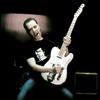
Joined: Mar 14, 2006
Posts: 2294
Kiev, Ukraine




|

Posted on May 05 2023 01:11 AM
I use Blossom Point after reverb and sometimes light boost or overdrive in the beginning of pedalboard. It depends on a tune context and arrangement.
— Waikiki Makaki surf-rock band from Ukraine
https://linktr.ee/waikikimakaki
Lost Diver
https://lostdiver.bandcamp.com
https://soundcloud.com/vitaly-yakushin
|
andare

Joined: Jul 11, 2018
Posts: 93
|

Posted on May 05 2023 01:19 AM
Last edited: May 05, 2023 01:24:14
|
andare

Joined: Jul 11, 2018
Posts: 93
|

Posted on May 05 2023 01:22 AM
I don't like overdrive pedals. They sound like pedals. If I play rock I use a P90 guitar into a fully overdriving tube amp and I roll back the volume on the guitar to get all shades of dirt down to squeaky clean. Single coils sound horrible that way but P90s and humbuckers have the fat low end and the mushiness to benefit from a tube amp that's going balls to the wall.
For my more surfy stuff I use the same tube amp at the edge of breakup (because tubes should always be cooking a bit) + various fuzzes. If it's a Tone Bender MK/1.5/MKII or a Fuzz face then it's always on and I get various degrees of distortion from the volume knob on the guitar. Other fuzzes (Fuzzrite, MKI, FY-2) are on/off.
What you hear on surf classics might not just be amp breakup. Mikes, mike preamps and studio gear definitely add to the sound.
Last edited: May 05, 2023 01:22:43
|
terma_reverb

Joined: Apr 17, 2012
Posts: 50


|

Posted on May 05 2023 02:20 AM
I would add that the reverb unit also adds a slight breakup to the sound. I think this is true for both the Fender reverb unit and the Surfy Bear.
My view about amps vs pedals is that overdriven amps are generally more dynamic than overdrive pedals, the pedal sound is like a "snapshot" of amp sound. Nevertheless, this can be seen as a feature, if you want a specific sound that can be easily transferred everywhere.
I use a Boss OD-3 that I have since I was a teenager. It is not transparent, it adds a bright tone character to the sound, and this is also why I like it. If you add an xotic EP booster before it, it makes the single coils almost sound like humbackers.
Last edited: May 05, 2023 02:24:05
|
IceratzSurf
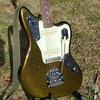
Joined: Oct 22, 2022
Posts: 294

|

Posted on May 05 2023 06:29 AM
I play around with a lot of different pedals into a Fender Princeton '68 Reissue.
It's easier for me to step on a pedal to get a quick change required in a loop mix.
Most boost pedals will perform into a breakup at some point. Unwanted for me at times.
I have found the cleanest pedals and use conservatively.
For total clean boost I use the Exotic RC v2 (Really Clean) and it performs well.
To add and gain I use the MXR Timmy Custom Shop and add gain.
The range of that pedal is really impressive.
Most other pedals I have tried are gain and more gain, all overdrive and nothing like I hear in vintage surf.
But they have thier place too.
|
synchro

Joined: Feb 02, 2008
Posts: 4567
Not One-Sawn, but Two-Sawn . . . AZ.





|

Posted on May 05 2023 08:26 AM
My own sentiment is that an amp breaking up on its own is far different from an overdrive pedal. If you boost, ahead of the amp, that can push an amp into overdrive, and I would find that approach to respond more like an amp breaking up naturally.
Overdrive pedals either use clipping diodes or, in some cases, you are actually pushing an FET preamp into overdrive, and that signal passes its clipped waveforms on into the signal chain.
I have several overdrive pedals, but I don’t use them all that often. My favorite is the Nobels ODR-1, which is transparent and relatively natural. It employs both soft clipping (diodes in the feedback loop of the Op Amp) and hard clipping (diodes directly on the signal path, after the Op Amp), which gives it a breakup curve which more closely resembles a tube amp breaking up.
I’ve also used an MXR Sugar Drive, which is somewhat similar to the legendary Klon Centuar, but doesn’t cost thousands of dollars. For a stronger overdrive, I’ve used a Boss SD-1 Super Overdrive, which is basically a Tube Screamer, but with asymmetric clipping diodes, instead of the symmetric diodes of a Tube Screamer. For higher gain, I’ve had good results with a Boss OS-2, which functions as both an overdrive (soft clipper) and a distortion (hard clipper) pedal.
The 6G15 reverb tank was basically a Fender Champ, single-ended, Class A amp, driving the reverb pan, and a recovery stage, to pass the signal along at an appropriate output impedance. The 6G15 can boost the signal, but Class A, single-ended amps have a nice breakup curve of their own. When you use a 6G15, you are literally playing through two tube amps. The Surfy Bear does the same thing, except that it’s an FET based amplifier, and a great sounding one, at that.
Iceratz approach is an amp with a higher value resistor in the negative feedback loop, than a typical Princeton, which reduces headroom. Hit that with a little bit of boost and you’ll get natural breakup. I have that amp’s big brother, the ‘68 Custom Deluxe reverb, and it had the breakup characteristics of a smaller amp, until I piggybacked an equal value resistor in parallel with the negative feedback resistor and the headroom then became that of a typical Deluxe Reverb.
The Blossom Point is an absolute favorite. I’ve never seen a schematic for one, so I am surmising to some extent, but I know that there’s a Limiter, which is basically the half of a compressor which limits the amplitude peaks of the signal entering the pedal. I would think of it as a very rapid automatic volume control that reduces the instantaneous spike of the attack of the note.
The Blossom Point also has a presence control, which is an adjustable negative feedback circuit which allows you to shunt some of the highs in the negative feedback loop, reducing the amount of signal damping of highs. The important point here is that the logic is inverted; if you reduce damping of highs, that makes for more highs coming out of the device. The Input control allows you to attenuate incoming signal, and the Output control is a 0-6 dB clean boost.
Pretty much every note I play through an amplifier has passed through a Blossom Point; I own three of them. It’s not an overdrive, but it does change the signal so that it resembles the response-curve of a Brownface Fender that is breaking a sweat, but not breaking up. I have a Winfield Elizabeth, which is basically a Blackface circuit, with two 6L6 tubes in the power section; essentially a Pro Reverb (but lacking the tremolo). If I place the Blossom Point in front of the Elizabeth, the amp sounds much more like a Brownface; it absolutely changes the character of the amp. I strongly recommend the Blossom Point for a Surf sound. We can’t all have a 6G14 Showman, and even if we have one, which I do not, it’s unlikely that we are going to be able to bring its volume to levels where the amp is breaking a sweat, unless we are playing outdoor gigs or in a very large venue. Slap a Blossom Point in front of a small, clean amp, and you will get a great sound.
— The artist formerly known as: Synchro
When Surf Guitar is outlawed only outlaws will play Surf Guitar.
|
Tele295
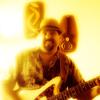
Joined: Feb 16, 2012
Posts: 153
Rincon Beach, California, USA

|

Posted on May 05 2023 09:51 AM
synchro wrote:
My own sentiment is that an amp breaking up on its own is far different from an overdrive pedal. If you boost, ahead of the amp, that can push an amp into overdrive, and I would find that approach to respond more like an amp breaking up naturally.
Overdrive pedals either use clipping diodes or, in some cases, you are actually pushing an FET preamp into overdrive, and that signal passes its clipped waveforms on into the signal chain.
I have several overdrive pedals, but I don’t use them all that often. My favorite is the Nobels ODR-1, which is transparent and relatively natural. It employs both soft clipping (diodes in the feedback loop of the Op Amp) and hard clipping (diodes directly on the signal path, after the Op Amp), which gives it a breakup curve which more closely resembles a tube amp breaking up.
I’ve also used an MXR Sugar Drive, which is somewhat similar to the legendary Klon Centuar, but doesn’t cost thousands of dollars. For a stronger overdrive, I’ve used a Boss SD-1 Super Overdrive, which is basically a Tube Screamer, but with asymmetric clipping diodes, instead of the symmetric diodes of a Tube Screamer. For higher gain, I’ve had good results with a Boss OS-2, which functions as both an overdrive (soft clipper) and a distortion (hard clipper) pedal.
The 6G15 reverb tank was basically a Fender Champ, single-ended, Class A amp, driving the reverb pan, and a recovery stage, to pass the signal along at an appropriate output impedance. The 6G15 can boost the signal, but Class A, single-ended amps have a nice breakup curve of their own. When you use a 6G15, you are literally playing through two tube amps. The Surfy Bear does the same thing, except that it’s an FET based amplifier, and a great sounding one, at that.
Iceratz approach is an amp with a higher value resistor in the negative feedback loop, than a typical Princeton, which reduces headroom. Hit that with a little bit of boost and you’ll get natural breakup. I have that amp’s big brother, the ‘68 Custom Deluxe reverb, and it had the breakup characteristics of a smaller amp, until I piggybacked an equal value resistor in parallel with the negative feedback resistor and the headroom then became that of a typical Deluxe Reverb.
The Blossom Point is an absolute favorite. I’ve never seen a schematic for one, so I am surmising to some extent, but I know that there’s a Limiter, which is basically the half of a compressor which limits the amplitude peaks of the signal entering the pedal. I would think of it as a very rapid automatic volume control that reduces the instantaneous spike of the attack of the note.
The Blossom Point also has a presence control, which is an adjustable negative feedback circuit which allows you to shunt some of the highs in the negative feedback loop, reducing the amount of signal damping of highs. The important point here is that the logic is inverted; if you reduce damping of highs, that makes for more highs coming out of the device. The Input control allows you to attenuate incoming signal, and the Output control is a 0-6 dB clean boost.
Pretty much every note I play through an amplifier has passed through a Blossom Point; I own three of them. It’s not an overdrive, but it does change the signal so that it resembles the response-curve of a Brownface Fender that is breaking a sweat, but not breaking up. I have a Winfield Elizabeth, which is basically a Blackface circuit, with two 6L6 tubes in the power section; essentially a Pro Reverb (but lacking the tremolo). If I place the Blossom Point in front of the Elizabeth, the amp sounds much more like a Brownface; it absolutely changes the character of the amp. I strongly recommend the Blossom Point for a Surf sound. We can’t all have a 6G14 Showman, and even if we have one, which I do not, it’s unlikely that we are going to be able to bring its volume to levels where the amp is breaking a sweat, unless we are playing outdoor gigs or in a very large venue. Slap a Blossom Point in front of a small, clean amp, and you will get a great sound.
Hey, pal, how does the Blossom Point compare with the Atomic Brain? It sounds like it’s similar, although the 301 preamp doesn’t have that limiter thing.
|
synchro

Joined: Feb 02, 2008
Posts: 4567
Not One-Sawn, but Two-Sawn . . . AZ.





|

Posted on May 05 2023 12:20 PM
Tele295 wrote:
Hey, pal, how does the Blossom Point compare with the Atomic Brain? It sounds like it’s similar, although the 301 preamp doesn’t have that limiter thing.
The Brain, as I understand it, is basically a preamp, and may serve some impedance matching functions. Yes, the Blossom Point can be used for up to a 6 dB boost, but that’s basically for volume matching, between bypassed and engaged. The Blossom Point will boost the volume, but that’s not really its role in the universe. As a rule, preamps are usually placed early in the signal path, and some people use them to overdrive other effects which come behind the preamp, not to mention boosting the signal level going into the amp.
The Blossom Point’s role in the universe is not signal boosting, and is certainly not to act as an overdrive. The sound I get out of the Blossom Point is not a high gain sound. It’s more like a clean amp, working hard and somewhat naturally compressed, but not breaking up.
— The artist formerly known as: Synchro
When Surf Guitar is outlawed only outlaws will play Surf Guitar.
|
Klas
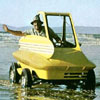
Joined: Feb 26, 2006
Posts: 2310
Stockholm, Sweden



|

Posted on May 05 2023 01:14 PM
racingsnail84 wrote:
... and that a lot of the early stuff wasn’t as clean as I initially thought it was.
Bingo!
— T H E ✠ S U R F I T E S
|
rfcii

Joined: Oct 28, 2018
Posts: 186
Quimper Peninsula, WA



|

Posted on May 05 2023 03:11 PM
Here is a very quick recording of the BP and the AB, using a little loop to show some simple chords and a couple individual notes. I am a little disappointed in the sound (it is just my phone) because as I was recording it I thought "this sound difference is pretty clear" but on the recording, less so. Nonetheless, that might be testament to both of these units - they can be subtle.
I have the Blossom Point between the Surfybear reverb and the Quilter Steelaire amp. I lack the precise audio terms, but it changes the color. It seems to expand the sound a little, making some of the highs creep out higher, and some of the bass go lower, although in reality it might be augmenting some of the higher bass that is simply more audible to make it "snappier". It also adds a bit of compression and warmth, far short from overdrive but definitely an altered signal.
I use the AB before the reverb, and usually do use it more like a volume boost. In this recording, I tried to get both units pretty close to unity so that the tone change would be clear, and not the volume change. The AB is complicated, and using both channels in various configurations can make big differences. It is all the more complicated when adding the Blossom Point! And pickups chosen and guitar volume affect all this too!
Anyway, I hope this helps a little - I do agree with Synchro that the BP is an "always on" pedal for me at this point, it is basically like a setting on the amp. I use the AB more as "pedal", as a volume boost and when trying to get a nastier tone, and in a band setting I would use it to have a solo jump out.
|
racingsnail84

Joined: Aug 29, 2021
Posts: 84
|

Posted on May 05 2023 07:03 PM
rfcii wrote:
Here is a very quick recording of the BP and the AB, using a little loop to show some simple chords and a couple individual notes. I am a little disappointed in the sound (it is just my phone) because as I was recording it I thought "this sound difference is pretty clear" but on the recording, less so. Nonetheless, that might be testament to both of these units - they can be subtle.
I have the Blossom Point between the Surfybear reverb and the Quilter Steelaire amp. I lack the precise audio terms, but it changes the color. It seems to expand the sound a little, making some of the highs creep out higher, and some of the bass go lower, although in reality it might be augmenting some of the higher bass that is simply more audible to make it "snappier". It also adds a bit of compression and warmth, far short from overdrive but definitely an altered signal.
I use the AB before the reverb, and usually do use it more like a volume boost. In this recording, I tried to get both units pretty close to unity so that the tone change would be clear, and not the volume change. The AB is complicated, and using both channels in various configurations can make big differences. It is all the more complicated when adding the Blossom Point! And pickups chosen and guitar volume affect all this too!
Anyway, I hope this helps a little - I do agree with Synchro that the BP is an "always on" pedal for me at this point, it is basically like a setting on the amp. I use the AB more as "pedal", as a volume boost and when trying to get a nastier tone, and in a band setting I would use it to have a solo jump out.
Awesome, thanks for sharing! I’m definitely interested in the Blossom pedal
|
synchro

Joined: Feb 02, 2008
Posts: 4567
Not One-Sawn, but Two-Sawn . . . AZ.





|

Posted on May 05 2023 09:09 PM
rfcii wrote:
Here is a very quick recording of the BP and the AB, using a little loop to show some simple chords and a couple individual notes. I am a little disappointed in the sound (it is just my phone) because as I was recording it I thought "this sound difference is pretty clear" but on the recording, less so. Nonetheless, that might be testament to both of these units - they can be subtle.
I have the Blossom Point between the Surfybear reverb and the Quilter Steelaire amp. I lack the precise audio terms, but it changes the color. It seems to expand the sound a little, making some of the highs creep out higher, and some of the bass go lower, although in reality it might be augmenting some of the higher bass that is simply more audible to make it "snappier". It also adds a bit of compression and warmth, far short from overdrive but definitely an altered signal.
Snappier is a good way to describe it. I think that the Limiter helps to add clarity.
rfcii wrote:
I use the AB before the reverb, and usually do use it more like a volume boost. In this recording, I tried to get both units pretty close to unity so that the tone change would be clear, and not the volume change. The AB is complicated, and using both channels in various configurations can make big differences. It is all the more complicated when adding the Blossom Point! And pickups chosen and guitar volume affect all this too!
Anyway, I hope this helps a little - I do agree with Synchro that the BP is an "always on" pedal for me at this point, it is basically like a setting on the amp. I use the AB more as "pedal", as a volume boost and when trying to get a nastier tone, and in a band setting I would use it to have a solo jump out.
I would tend to agree that if you want a volume boost, a separate pedal, early in the chain, is a better way to go. You could, feasibly, use the Blossom Point as a clean, 6dB boost, but that’s not really how it’s meant to be used. It allows you to adjust input and output volumes, but the Blossom Point is not meant to be in the boost or overdrive worlds.
— The artist formerly known as: Synchro
When Surf Guitar is outlawed only outlaws will play Surf Guitar.
|
Samurai

Joined: Mar 14, 2006
Posts: 2294
Kiev, Ukraine




|

Posted on May 06 2023 03:55 AM
rfcii wrote:
Here is a very quick recording of the BP and the AB, using a little loop to show some simple chords and a couple individual notes. I am a little disappointed in the sound (it is just my phone) because as I was recording it I thought "this sound difference is pretty clear" but on the recording, less so. Nonetheless, that might be testament to both of these units - they can be subtle.
I have the Blossom Point between the Surfybear reverb and the Quilter Steelaire amp. I lack the precise audio terms, but it changes the color. It seems to expand the sound a little, making some of the highs creep out higher, and some of the bass go lower, although in reality it might be augmenting some of the higher bass that is simply more audible to make it "snappier". It also adds a bit of compression and warmth, far short from overdrive but definitely an altered signal.
I use the AB before the reverb, and usually do use it more like a volume boost. In this recording, I tried to get both units pretty close to unity so that the tone change would be clear, and not the volume change. The AB is complicated, and using both channels in various configurations can make big differences. It is all the more complicated when adding the Blossom Point! And pickups chosen and guitar volume affect all this too!
Anyway, I hope this helps a little - I do agree with Synchro that the BP is an "always on" pedal for me at this point, it is basically like a setting on the amp. I use the AB more as "pedal", as a volume boost and when trying to get a nastier tone, and in a band setting I would use it to have a solo jump out.
Nice comparison! That’s pretty much as I hear difference of Blossom point with boosters and light overdrives. Blossom point is more like a sweet plugin to your amp than a pedalboard piece.
— Waikiki Makaki surf-rock band from Ukraine
https://linktr.ee/waikikimakaki
Lost Diver
https://lostdiver.bandcamp.com
https://soundcloud.com/vitaly-yakushin
|
synchro

Joined: Feb 02, 2008
Posts: 4567
Not One-Sawn, but Two-Sawn . . . AZ.





|

Posted on May 06 2023 08:08 AM
Samurai wrote:
Nice comparison! That’s pretty much as I hear difference of Blossom point with boosters and light overdrives. Blossom point is more like a sweet plugin to your amp than a pedalboard piece.
Which is pretty much what Surfy Industries claims. They don’t think of it as an effects pedal, in the conventional sense of the word, but more as an amplifier enhancer.
You don’t really hear a profound difference when you switch it on, but you notice it when you switch it back off. When I got mine, I spent several minutes switching it on and off, with my ear cocked, listening to hear if this gadget actually did anything. I kept clicking it on and off, over and over again, and quickly realized that it made a significant difference, but the contrast didn’t really present itself all that well until I switched it off. Then, I saw Ryan, from 60 Cycle Hum do the same thing and he just kept switching it on and off, over and over. Then he looked into the camera and asked; “is this going to be my new favorite thing?”
Well, speaking for myself, it really has become one of my favorite things. I own three of them, now; one for each pedalboard. Honest to goodness, I rarely strike an amplified note that does not pass through a Blossom Point. It’s obvious use is for Surf; keep in mind that the first run of these were known as the “Brownfacer”, as in they helped you to get a Brownface sound out of other amps. The first generation of these pedals didn’t have a bypass switch. You plugged it into the signal path, set the Presence to taste, and left it running.
The way I look at it, is that the Blossom Point is like switching to a different amp. The illustration may be somewhat lame, but I would say that my effects pedals reach forward in the signal path, changing what the amp sees. In reality, this is true of Blossom Point, but it acts as if you are playing through a different amp, and getting a different response from the amplifier.
— The artist formerly known as: Synchro
When Surf Guitar is outlawed only outlaws will play Surf Guitar.
Last edited: Dec 29, 2023 07:21:17
|
JayPoison
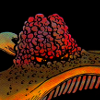
Joined: Oct 31, 2020
Posts: 30
Lyon, far from the beaches




|

Posted on May 06 2023 08:13 AM
I used to have my Tube Screamer as a boost in my set up, because I was looking for that Dick Dale-style grain of the amp that breaks up. It still is THE sound I'm trying to get.
But the more I play surf and the more I use my gear, the less I use overdrive. In fact on my latest recordings I completely ditched the overdrive and let the amp do its thing, and it's much, MUCH better. I read on here that the cleaner your sound, the "surfier" it gets as long as you push the volume (and not the gain) and have a decent reverb. And oh boy, even with my cheap gear, did it verify !
Rather than overdrive or distortion to "dirty" a surf sound and give it more gain (and make the amp break), I've started to push the volume on my compressor a lot more. I have a compressor at the start of my signal and it makes a ton of difference to get a clean sound but also to give more input to everything. I've had a lot more good results using this than adding my tubescreamer to the sound, something a lot more authentic.
— Fear The Bat People !
|
synchro

Joined: Feb 02, 2008
Posts: 4567
Not One-Sawn, but Two-Sawn . . . AZ.





|

Posted on May 06 2023 10:59 AM
JayPoison wrote:
I used to have my Tube Screamer as a boost in my set up, because I was looking for that Dick Dale-style grain of the amp that breaks up. It still is THE sound I'm trying to get.
But the more I play surf and the more I use my gear, the less I use overdrive. In fact on my latest recordings I completely ditched the overdrive and let the amp do its thing, and it's much, MUCH better. I read on here that the cleaner your sound, the "surfier" it gets as long as you push the volume (and not the gain) and have a decent reverb. And oh boy, even with my cheap gear, did it verify !
Rather than overdrive or distortion to "dirty" a surf sound and give it more gain (and make the amp break), I've started to push the volume on my compressor a lot more. I have a compressor at the start of my signal and it makes a ton of difference to get a clean sound but also to give more input to everything. I've had a lot more good results using this than adding my tubescreamer to the sound, something a lot more authentic.
I think that a lot of meaning gets mired in the terminology. Overdrive pedals can mean a pedal that literally overdrives an Op Amp, causing waveform distortion, but most overdrive pedals, and certainly the Tube Screamer and its many peers, use soft clipping, which is to say that there are diodes in the feedback circuit of an Op Amp which clip the signal to cause waveform distortion.
It probably pays to define what I mean when I say distortion. If you put a perfect sine wave into a device and the signal leaving that device is not a perfect sine wave, that difference is distortion. There are degrees of distortion, ranging from imperceptible to so heavily distorted that the source sound is unrecognizable. Every device, every transistor, Op Amp, or vacuum tube makes a copy of the signal which is fed into it, and since no copy is absolutely perfect, by definition, every device introduces distortion, although many devices only introduce minute amounts of distortion. This definition varies from how pedals are marketed, but I’m speaking in terms of how a signal would appear on an oscilloscope.
The reason that transistor amps are disliked by many players is that the early designs were too close to perfect, and the sound seemed harsh, in comparison to a tube amp. More recent designs have addressed this, and there are now solid state amps that sound great. The point is, our ears like some distortion, and I’m not necessarily talking about Jimi Hendrix’ style distortion (which I personally dislike), but the distortion that is present when we hear clean guitar, coming out of a tube amp or a good solid state amp, such as a Quilter. What we call clean guitar, is still somewhat distorted.
Overdrive pedals, such as the ubiquitous Tube Screamer, introduce distortion, early in the signal path. While it sounds like an amp cranked up to the level of natural distortion, an overdrive pedal is a different thing, altogether. The word “overdrive”, refers to putting a signal into an amplification stage which is of such high amplitude that the amplification stage cannot create an accurate copy of the waveform, and thus spits out a waveform that is shaped differently than the waveform fed into its input. In this scenario, distortion of the waveform is a result, and overdrive of a component is the reason for that result.
If I were to turn up the volume (clean boost) on a Catalinbread Topanga to such a degree that it overloaded the next pedal in line, that would be overdrive. Likewise, if you have an amp with a Master Volume (which attenuated the phase inverter), and you crank the preamp volume to the point of distortion, you are over driving the 2nd (and possibly 3rd) stage of the preamp to obtain a distorted waveform, and then reducing the amplitude of the signal driving the power amp, by rolling back the master volume. So, once again, distortion is the outcome, and overdrive is how the distortion was produced.
“Overdrive” pedals frequently use clipping diodes to simulate and overdriven sound, although some of them may actually overdrive components within to get that sound. “Distortion” pedals tend to boost the signal cleanly, then feed that higher amplitude signal along a path with clipping diodes, which results in hard clipping. So an overdrive pedal is likely to have some clean signal retained in the mix, while a distortion pedal passes all of the signal through a path which clips, due to diodes.
The term gain has come to be used to describe distortion and/or overdrive, but it actually is simply the ratio between input amplitude and output amplitude. A high gain circuit can overdrive the next stage and cause distortion, but gain actually just means a stronger signal, of higher level, and doesn’t imply distortion.
So, when we talk about Dick Dale’s sound, we are talking about a large amp, turned up to the point that the amplification stages cannot accurately track the input signal, so there is distortion; in this case, natural distortion of an amp working very, very hard. Beyond that, the response of our hearing becomes less detailed at higher volumes, so just being in the presence of loud sounds changes how we hear.
The natural sound of an amp turned up loud is pretty desirable. I once had a Fender Hot Rod DeVille, which is a relatively inexpensive amp, but if I turned the clean channel up to about 8, the sound was impressive, to say the least. IMHO, that’s the “secret” to Dick Dale’s sound … and the sound of many early Surf artists, could be credited to big, cleanish amps, putting their electronic hearts and souls into the task of amplifying the signal coming off of a Fender guitar. Add some tremolo and/or reverb, and you are there.
I’m a big believer in free will, and I don’t impose my choices upon others, but I also believe that free will also includes freedom for me to choose not to listen to something I don’t like. So, I don’t have a problem with someone choosing to play Surf employing an overdrive pedal, and in fact, a friend who is an excellent Surf player does this very thing. Paul Johnson employed some very natural sounding overdriven sounds into the Packards High Energy album, and I love it, but that is about my limit, when it comes to distortion.
If you take distortion to the levels found on many Jimi Hendrix songs, I tend not to like it. I have most, if not all, of Jimi Hendrix output, but I don’t listen to it often, keeping it more as reference material. However, I love the guitar sounds on The Wind Cries Mary. My tastes stop short of Heavy Metal, Grunge, etc. It’s just not me.
I appreciate that Surf could be played with heavy distortion, and I might find it interesting to analyze, but it’s not something I’d listen to for fun and not a sound I cultivate. When I play, whether at home, or at a gig, I tend to use a small amp, and on the louder passages, there’s likely a degree of breakup, but the dominant sound is clean. I would venture that most of the time, I play through either a 5 watt Winfield Typhoon (think Vox), or a 12 watt Winfield Tremor (think Brownface Princeton). Neither is a high gain amp, but either will push into natural distortion, if you crank the volume far enough and play hard. Both sound great, and both sound massive if mic’d through a PA. I once stepped forward on stage at an outdoor gig, to where I could hear the PA mains, and my little 5 watt Typhoon sounded as big as a Showman. IMHO, this is the way to go. I can’t even remember the last time my Twin was fired up.
— The artist formerly known as: Synchro
When Surf Guitar is outlawed only outlaws will play Surf Guitar.
|



































